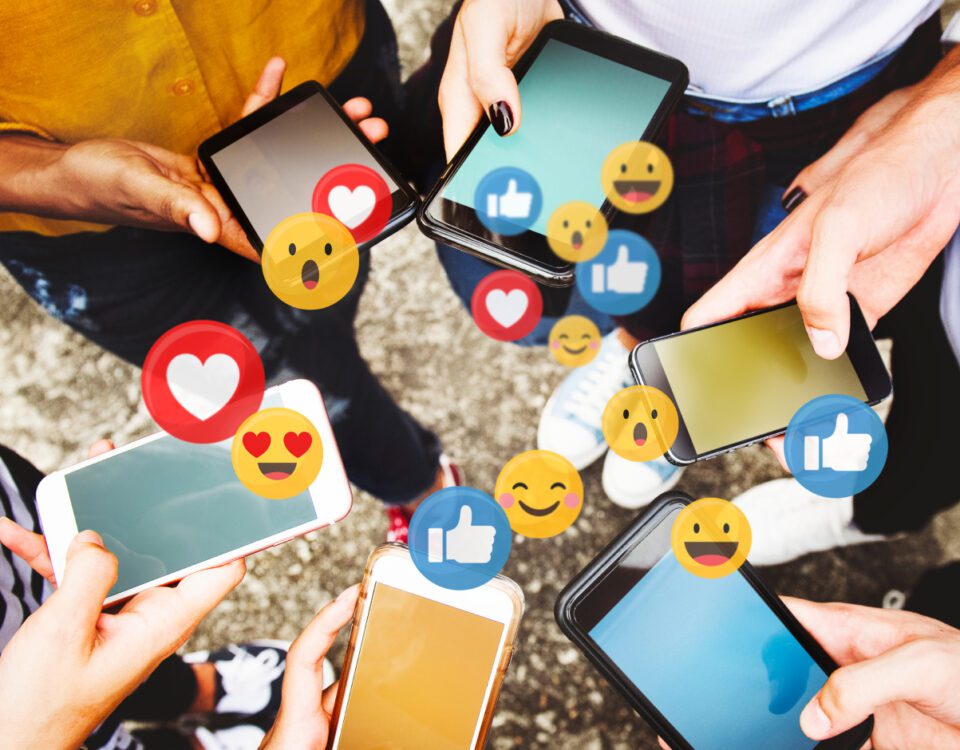Share
From customer service chatbots and automated response systems to computer-generated scripts that can write content for you, there’s no denying the sudden rise in artificial intelligence (AI) usage in recent times - especially in the world of social media, marketing and customer support. In fact, ChatGPT has become the fastest-growing app in the world, recording a whopping 100 million users within just 2 months of its launch and being described as “the best AI chatbot ever released” by the New York Times. However, here at 3sixfive, we pride ourselves on our human approach to Community Management, Sentiment Analysis and more expert services, and in the majority of cases we recommend that brands steer clear of bots if they want to build genuine relationships with their online communities. So, can AI ever replace real people on social media? Let’s take a look at its pros and cons.

Advantages of AI
First of all, it’s important to note that AI isn’t all bad. It can undoubtedly be of assistance in certain situations, and provides benefits to a number of industries such as healthcare, finance, manufacturing, logistics and cyber security. Here are some significant ways in which it can help.
Reduction in Human Error
One of the biggest advantages of artificial intelligence is that it can significantly reduce errors, and increase accuracy and precision. Every decision made by AI is determined by previously gathered information and a specific set of algorithms, so when programmed and trained properly, it can reduce mistakes to zero, meaning risks don’t have to be taken in dangerous situations and common slip-ups made by humans can be eliminated. If you’ve ever turned up to work in a bad mood and found yourself making silly mistakes as a result of your mental state, you’ll definitely understand how a bot could be beneficial!
24/7 Availability
Naturally, humans need breaks and time off to balance their work life and personal life, whereas AI can work endlessly without getting tired. Bots can be available around the clock, which is beneficial for customer service purposes - particularly for businesses operating across multiple time zones. However, instead of handing over your entire customer support workflow to AI, we would recommend using it only for automated out-of-hours responses. This lets customers know that you have at least received their message, and that they will receive a reply from a real person as soon as your team is back in the office the next day.
Removal of Repetitive Jobs
Even in the most enjoyable of careers, there are always going to be some tasks that simply aren’t fun to do! In fact, studies suggest that around 40% of our time is wasted as a result of repetitive, mundane jobs. Thankfully, developments in artificial intelligence mean that menial tasks - such as backing up files and managing data - can be automated, allowing us to focus on the parts of our work that we love, and being creative.
Unbiased Decisions
Humans are driven by emotions and without even realising it, our unconscious biases can sometimes affect our work. On the other hand, AI is of course devoid of emotions, making it highly practical and rational in its approach, which ensures more accurate decision-making. This is advantageous for tasks where there is a clear, black-and-white solution and nuance is not needed.

Disadvantages of AI
Now let’s take a look at the drawbacks of artificial intelligence to find out why it’s not always a good idea to hand over your workload to a bot, and why humans still have the upper hand when it comes to providing community support and customer care online.
No Empathy, Ethics or Emotions
The three big E’s are missing from AI: empathy, ethics and emotions. When a customer is voicing a serious complaint or concern, the last thing they want is to be met with a cold, rigid response from a robot that can’t empathise with their situation. This will only further their frustration, and gives the impression that your business doesn’t care about what its customers have to say.
Similarly, when a fan of your brand shares a positive experience they’ve had with your product on social media, they expect to be met with the same positive energy. However, because bots can’t understand human emotions, they can’t display excitement or enthusiasm the same way a human can, making it very difficult for them to form close connections with your audience and celebrate successes.
Chatbots Misinterpret Information
Unlike real humans, chatbots rely on specific cues and combinations of keywords to trigger their responses, which means they sometimes struggle to understand what a customer is trying to say. If someone asks a question that isn’t in the bot’s database or submits a query that it doesn’t recognise, it may not respond correctly (or at all!). The same goes for slang, abbreviations, misspellings and other informal language features, which present further difficulties for chatbots.
Misinterpretation doesn’t just apply to customer service requests either - it’s also an issue for bots being used for automatic content moderation. Comments that aren’t offensive and don’t violate your community guidelines can sometimes be incorrectly detected as spam, causing them to be deleted or even leading to the suspension of the user’s account, which understandably leads to disappointment.
It doesn’t end there - misinterpretation is a problem when it comes to Sentiment Analysis too. The majority of modern-day sentiment tracking systems rely on AI-based NLPs (Natural Language Processors) to detect the emotions behind words and phrases, but they often get this wrong, resulting in positive comments being sorted into the negative category and vice-versa. You can learn more about the importance of human-led sentiment analysis in this blog post, or discover our unique Human Insight service here, which involves manually monitoring the sentiment of your brand’s incoming comments to determine how it’s perceived by the public. It’s the only sentiment tracking system on the market which is run by real people, not bots!
Lack of Creativity
Whether we’re talking about content or Community Management, creativity is a key aspect of working in social media. Creative content makes posts and articles more engaging, whereas AI can only work with facts and pre-existing data. It’s unable to come up with new ideas and isn’t relatable due to its lack of lived experience, meaning it can’t build captivating stories or add flair, humour and personality like a real writer or Community Manager can.
Plagiarism is another big issue, as AI-generated content obviously has to base itself on copy that’s already been posted online, which means other writers’ hard work is effectively being ‘stolen’ by bots and repurposed into new content. This is causing a lot of instability and uncertainty in copyright law, because it’s currently hard to know who really owns the rights and permissions for artificially created content and artwork.
Personalisation Problems
How many times have you been browsing an eCommerce store and seen a recommendation for an item that you aren’t remotely interested in? Although algorithms are certainly getting better at personalising our shopping experiences and showing us products we might like, AI still can’t understand the complex wants, needs and preferences of human beings as deeply as a real person can. 56% of online shoppers say they’re more likely to return to a website that shows product recommendations, so it’s important to get them right - and the best way to achieve this is to have real people behind your Live Chat facility instead of a bot.
Maintenance & Training
Installing and training AI can accumulate huge upfront costs for businesses. Maintaining it can also be expensive as it requires close, regular monitoring to avoid security breaches and system breakdowns. Plus, in order to keep up with ever-changing social media trends, bots need to be trained constantly and fed with new information to make sure they don’t fall behind. This means that a large portion of your team’s time will need to be spent training and perfecting the AI so that it can work properly, instead of focusing on their usual tasks.
Furthermore, unlike humans, bots can’t improve on their own - everything they know and everything they do must come from an external source. While AI is proficient at repeatedly carrying out the same task, if any adjustments or updates are required (or if we want it to start doing a job other than the one it was originally designed for), it has to be manually programmed to do so.
Key Artificial Intelligence Stats
• The forecasted annual growth rate of AI by 2027 is 33.2%
• 86% of consumers prefer interacting with a human over a bot
• Around 50% of people believe that companies use chatbots to deflect responsibilities and intentionally prevent them from being able to contact live agents
• 71% of consumers would be less likely to use a brand if they knew it didn’t have human customer service agents available
• 60% of consumers are concerned that chatbots cannot understand their queries
• 65% of people are concerned that they could lose their jobs to AI in the next few years
Summary
The bottom line is that while AI can definitely help us automate some of the simpler tasks within our social media jobs, real people can’t be replaced - and a human approach to customer care is still the best way forward. The emotional intelligence, empathy and flexibility required to build strong connections simply can’t be replicated by robots, which is why Community Management should be carried out by real people (like the 3sixfive team!). Get in touch to find out how we can assist your brand, or discover the rest of our 100% human-led services here.










